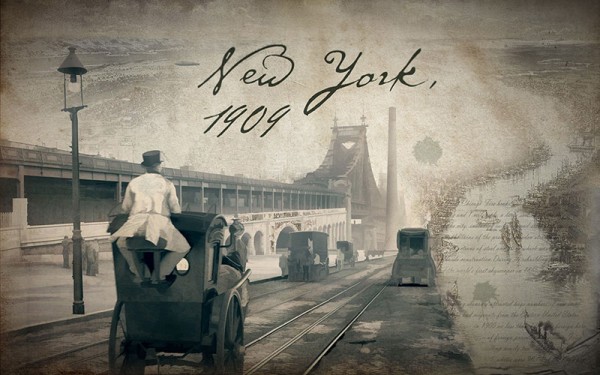Not since the sixties and seventies, with the black power movement, flowering of Afrocentric scholarship, and debut of Alex Haley’s Roots, novel and mini-series, has there been so much popular interest in the history of slavery. We have seen Roots remade; award-winning books like Edward Baptist’s The Half Has Never Been Told climb bestseller lists; and The Freedman’s Bureau Project’s digitization of 1.5 million slavery-era documents gives citizen-scholars the tools to research the history on their own.
In addition to these developments, Slate magazine has designed a multipart, multimedia course, “The History of American Slavery,” as part of its online educational initiative, “Slate Academy.” Hosted by Slate’s Jamelle Bouie and Rebecca Onion and featuring guest historians like Baptist, Henry Louis Gates, Jr., Annette Gordon-Reed, Eric Foner and more, this thorough survey consists of a nine-part podcast, with copious supplementary essays, book excerpts, and other resources drawing on primary documents and artifacts. One supplement, the animation above, shows us the “The Atlantic Slave Trade in Two Minutes.”
Visualizing 315 years—“from the trade’s beginning in the 16th century to its conclusion in the 19th”—the animation displays slave ships as increasing numbers of black dots zipping across the Atlantic to the Americas from the African coasts. The dots “also correspond to the size of each voyage. The larger the dot, the more enslaved people on board.” The Youtube video above provides only a partial representation of this impressive graphic. The full animation at Slate allows users to pause, click on individual dots, and get detailed information, when available, about the name of the ship, number of enslaved people transported, and points of origin and entry in the New World.
In all, we see animated “more than 20,000 voyages catalogued in the Trans-Atlantic Slave Trade Database.” And though we typically, with typical U.S. solipsism, think of American slavery as a mostly North American phenomenon, the truth is quite the contrary:
Of the more than 10 million enslaved Africans to eventually reach the Western Hemisphere, just 388,747—less than 4 percent of the total—came to North America. This was dwarfed by the 1.3 million brought to Spanish Central America, the 4 million brought to British, French, Dutch, and Danish holdings in the Caribbean, and the 4.8 million brought to Brazil.
Early slave expeditions were conducted by the Spanish and Portuguese. “In the 1700s,” writes Bouie, “Spanish transport diminishes and is replaced (and exceeded) by British, French, Dutch, and—by the end of the century—American activity. This hundred years—from approximately 1725 to 1825—is also the high-water mark of the slave trade, as Europeans send more than 7.2 million people to forced labor, disease and death in the New World.” Surprisingly, Portugal remained one of the leading nations among enslavers for most of the slave-trade’s history.
The animation and short explanatory essay by Bouie show us the staggering historical scope of the immensely profitable and profoundly inhumane enterprise that shaped not only the United States, but also—in many ways more so—Central and South America and the Caribbean. There is no history of the Americas, and no growth of many of the colonies into wealthy, world-historical nations, without slavery, nor can the wealth of Europe be in any way divorced from the profits of the slave trade and slave industry. Bouie and Onion explain in the short video above why they decided to produce the course.
For a sense of how historians’ and the public’s understanding of slavery have changed over many decades—for all kinds of ideological reasons—read this excerpt from Baptist’s groundbreaking book. As he says in an interview with Salon, most histories and recreations of the period of enslavement attempt to hide the facts: “The resistance to reckoning with the role of slavery in the trajectory that makes the U.S. the most powerful nation on earth, that’s real; that’s very, very deep…. Whatever we say about the role of the U.S. in global history, it’s absolutely clear to me that slavery is essential to the rise of U.S. power.” Slate’s series goes a long way toward telling us the true history of slavery, from the mouths of writers and scholars who engage with it daily.
Related Content:
Crowdsourced Database Will Locate the Burial Sites of Forgotten US Slaves
Josh Jones is a writer and musician based in Durham, NC. Follow him at @jdmagness





